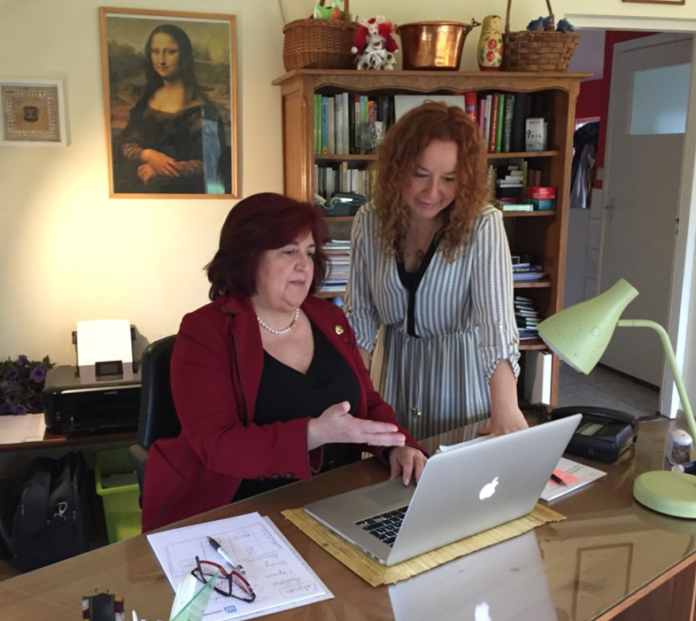We used to think of virtual meetings as a sort of “surrogate” to replace the in-person “real thing”, whenever forced by time or budget restrictions.
Covid-19 has changed our perspective. We are learning to work more from home or anyhow at a distance, so virtual meetings are gradually becoming the new norm. Companies are learning to appreciate the low-cost and most people appreciate the flexibility. So it is quite safe to predict that virtual meetings are here to stay.
But do we like them? Not really.
First of all, almost everybody had too many meetings also before Covid-19 and now that we have become used to meeting anytime anywhere the pressure to meet is on the increase. Meetings are not always the most effective way to advance things, but they are a very good excuse when we hesitate to advance.
In this sense, virtual meetings present us with some of the same challenges as in-person meetings: selecting only the really useful ones and avoiding the exhaustion of attending boring meetings (or imposing boring meetings to others).
Yet, online meetings present us with additional new challenges. As an executive coach, I have the privilege of hearing what people might not share in public, especially about their anxieties and fears. For example, the vast majority of people hate to see themselves on video so they may shut down their camera or become very self-conscious; either way, it impacts their ability to stay present. Without video, most people are not trained to carefully listen to various sound changes, so they easily miss cues of others getting disconnected or disagreeing. Many also feel “imprisoned” as they may not be able to move or pace around, so again getting distracted and not as resourcefully present as in face-to-face situations. I could go on with many examples.

But I have grouped these concerns into three main questions, the 3 types of anxieties that stress us and make us dread virtual meetings, especially when we are responsible to call one such meeting ourselves:
- How do I make sure that people feel engaged and stay focused in a virtual meeting when I myself get so often distracted?
- How do I make sure that all participants are open and contribute at their best when I myself feel restricted in my movements and I know that I am therefore not at my best?
- How do I make sure that we reach an aligned conclusion, so that everybody is clear on next steps and feels accountable when nobody seems to take virtual meetings really seriously (they never feel like “the real thing”) and so agreements stay “loose”?
These concerns about virtual meetings are all valid and legitimate, yet we are perfectly able to overcome those issues if we want to. We just need to realize that it takes a little effort and some learning.

What we need, in order to make our Virtual Meetings at least as productive as in-person meetings, is a transformational approach: we need to “hack our beliefs”.
The first “hack” is about shaking away the fear of technology: we usually know what it takes and how to prepare to get a f2f meeting to run smoothly (e.g. check beamers and lights, share agenda, set a smooth flow of interventions, etc.); we are still learning what it takes and how to prepare for virtual meetings, but it is similar: we need to test the platform (including learning to relax in front of the camera), share intention, expectations and agenda, have coffee breaks and a stimulating flow, etc. We need a proper set-up in order to keep people engaged and focused.
The second “hack” is about shaking the belief that we can only have open relationships in person; if we are used to feeling more at ease in person, we may need extra encouragement to relax and contribute virtually; we need to develop new “Emotional Intelligence Antennas” (e.g. detect changes in voice and speaking rhythm) as well as learning the skills to “notice and name”, ask open questions, invite and value insights, in order to help create trust, open the dialogue and make sure that everyone feels encouraged and expected to give their best.
The third “hack” is about shaking the belief that agreements made in person are “more valid”: even if we do not shake hands, hugs or celebrate together at the pub, we can still create good routines to make the virtual meetings a valuable point of reference, e.g. by keeping the aligned intention on screen in all subsequent meetings, utilizing technology to set up reminders and celebrating virtually; we can learn to maintain focus on creating shared ownership and mutual accountability in a new framework.
Laura Lozza (laura@grooa.com)
MD and Senior Executive Leadership Consultant, Grooa AS www.grooa.com
Do you wish to learn more? Attend our free online training course (three hours + practice).
Next LIVE course will be on 29/06, 30/06, 1/07 (4:00-5:00 pm CET).
Register here (email me for next dates or recording): https://register.gotowebinar.com/register/7271779987093966860
Source: SPonsored content from Grooa.











